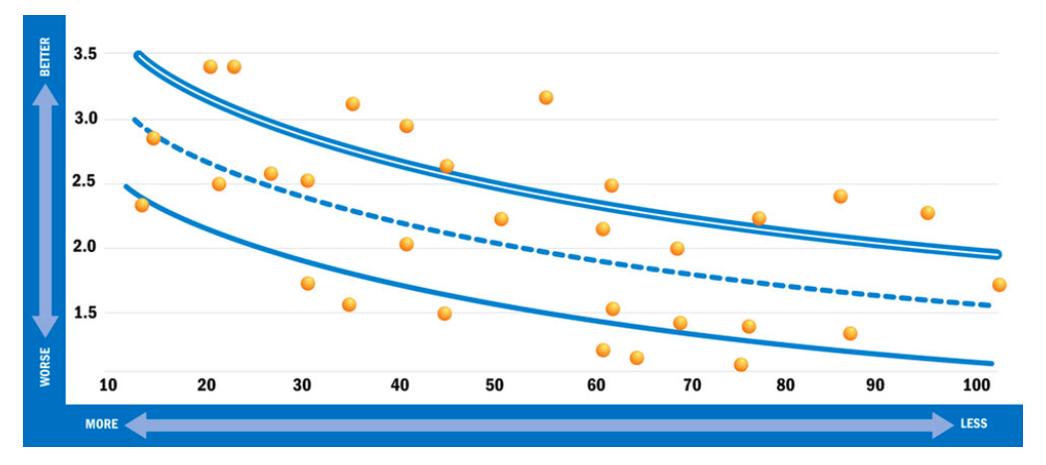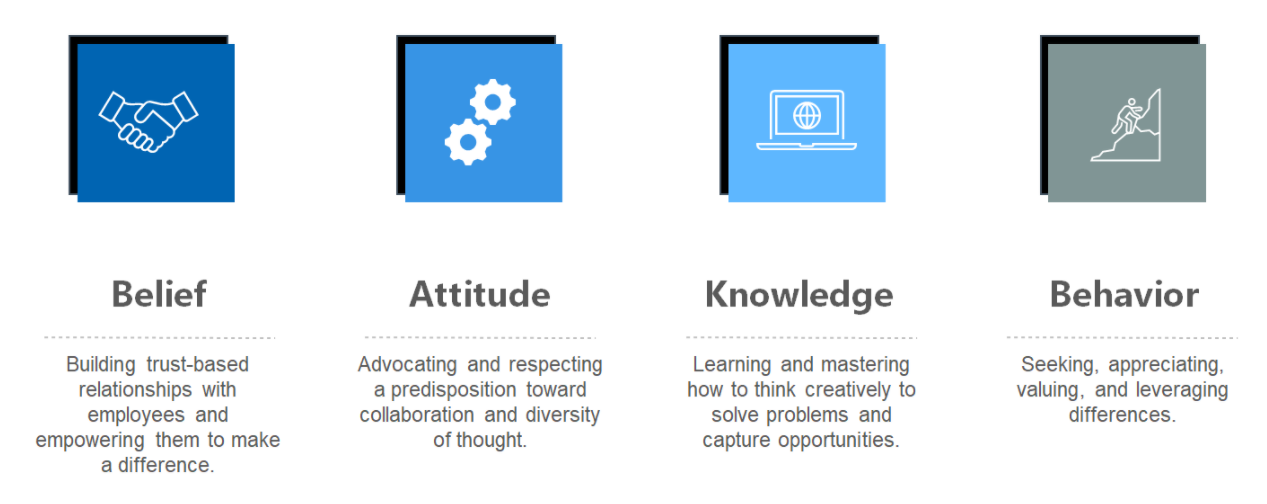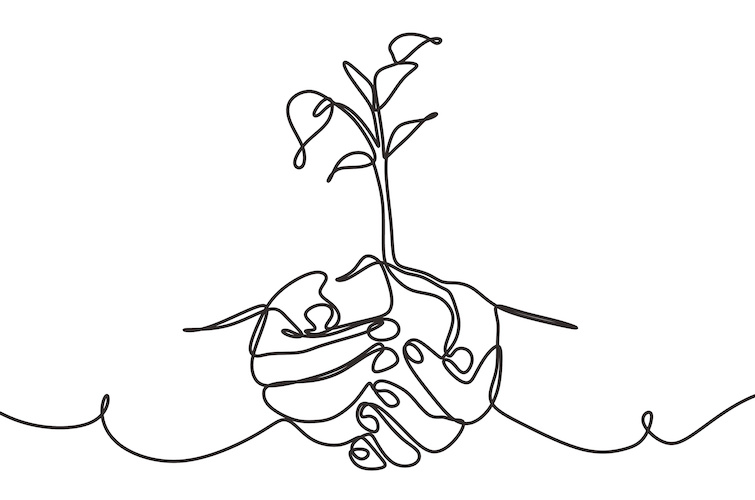In the past several months, we have been battling multiple crises simultaneously: global public health, a collapsing economy, racial injustice. These crises have upended almost every aspect of life, from personal experience to professional practices. We are all looking for ways to help in response to these crises. To thrive from unprecedented challenges and sustain organic growth in a globally competitive environment, we must leverage innovation as a driving force, along with agility, adaptability and resilience.
Many studies around innovation lean into the technical and process side of the equation but barely explore the cultural aspect — a sustainable foundation of innovation.
Research proves time and again that there exists a powerful connection between innovation and diversity, equity and inclusion; our challenge is to build a robust cornerstone for change by optimizing that connection. That is where nurturing a cultural foundation for innovation starts.
Innovation is even more critical in times of crisis
We are living in a world full of volatility, uncertainty, complexity and ambiguity. During times of extreme uncertainty, corporations tend to short-term reactions to shift away from innovation, place efforts on hold or run the business as usual to avoid risk.
Nevertheless, a June 2020 study by McKinsey indicates that companies that invest in innovation through a crisis outperform peers during the recovery and deliver superior growth afterward.
As the figure below shows, organizations that maintained their innovation focus through the 2008 financial crisis emerged stronger, outperforming the market average by more than 30 percent and continuing to deliver accelerated growth over the following three to five years.

History has also proven that consumers and businesses will look for more cost-effective, convenient and creative products and services as they come out of downturns.
For example, the 2008 financial crisis gave birth to the innovation of a shared economy. With reduced income and needs of a frugal lifestyle in housing and transportation, people scrambled to share empty rooms and car rides. That led to successful disruptive startups like Uber, Airbnb and Groupon.
Although these examples are certainly different from what we are dealing with in the COVID-19 global pandemic, they demonstrate how opportunities for innovation can be found in times of crisis.
A diverse talent pipeline as a valuable source of innovation
Prioritizing innovation today is the key to unlocking post-crisis growth. But how can we sustain innovation in a highly competitive environment?
Cultivating a diverse talent pipeline can be a starting point. A valuable source of innovation derives from a diverse workforce, which reflects today’s marketplace through consumer insights and “wisdom of the crowd” that can lead to creative betterment. Diversity of talent, by definition, provides more ideas and perspectives into driving for the best business solutions.
People from different backgrounds see problems and solutions from different perspectives. These perspectives are accompanied by the heuristics that define how individuals search for answers. When we encounter an issue, we encode our perspectives first and then apply our particular experience to explore new and better resolutions. The more varied aspects and expertise we have, the better solutions that can surface. That is why diverse teams often outperform homogeneous teams based on merit alone.
Professor Ron Burt of the University of Chicago conducted a study indicating that people with more diverse sources of information generate consistently better ideas. In the figure below, the vertical axis shows management assessments of a series of employee ideas. The horizontal axis measures the level of diversity in an employee’s internal connections. As you move to the right, you see employees who are more insular in their relationships. They lack the diversity of input in their daily work. The figure indicates that higher diversity of connections also translates to higher-quality ideas, a fundamental component of innovation.

Today, many companies are becoming more intentional about leveraging diversity to spur innovation because we know that diversity trumps ability and enables innovation.
Case in practice
At Walmart, we believe the following three steps are essential to formulate a diverse talent pipeline.
First, think and apply innovative approaches beyond traditional recruiting means. Cast a broader net to expand the candidate pool to include diverse talent. For example, Walmart is a primary supporter of the Girls Who Code — a national initiative to expand opportunities for girls in technology. The company believes in the focus on STEM development among youth as looking to the future. While supporting a good cause, the company also unbolts a superb talent source. This program is on track to close the gender gap in new entry-level tech jobs by 2027.
Second, revisit and strengthen the processes through the talent life cycle. Start from recruiting and hiring, such as having inclusive language for every job description. Walmart requires diverse slates and a diverse interview panel for open positions. The company mandates that new jobs must open internally first. Recruiters and hiring managers are mandated to attend unconscious bias training — an effort to mitigate bias in all selection decisions.
Third, implement bold and audacious programs that attract, develop and retain diverse talent in the workplace; in the meantime, benefit the community and the local economy with jobs.https://www.chicagobooth.edu/faculty/directory/b/ronald-s-burt
A few examples below demonstrate how Walmart attracts and retains diverse talent through various initiatives, especially during the COVID-19 pandemic.
- Investing in a diverse workforce for the future is a break-or-make factor for business growth. Walmart commits billions of dollars in training and upskilling its workforce. For example, the company offers its associates a $1 college program to access higher education, an online learning platform like LinkedIn Learning with more than 50,000 courses, and hundreds of Walmart Academies to upskill frontline workers.
- According to the U.S. Bureau of Labor Statistics, more than 17.5 million Americans lost their jobs in June 2020. Walmart presents an employment opportunity for many of those people. The company has hired 500,000 people from mid-March to August. With innovative measures in place, Walmart has shortened its hiring process for store associates, which normally takes two weeks to complete, to as little as 24 hours. And among the new hires, 51 percent are women and 53 percent are people of color.
- The company urges managers to attend the unconscious bias training and inclusive leadership training as part of their DEI goals. And corporate officers are equipped with a DEI Toolkit to ensure that fair and equitable processes and practices are in place related to recruiting, hiring, promotion, succession planning and performance evaluation.
- By the end of June, Walmart had hired 265,000 veterans since 2013, with more than 44,000 promoted to roles with higher pay and greater responsibility. The Veterans Welcome Home program provides a guaranteed job offer for any eligible, honorably discharged U.S. veteran.
- By July, the company had distributed $1.1 billion in cash bonuses to recognize its hourly associates working in stores and clubs for their contributions to communities across the country during the pandemic.
A culture of inclusion as an incubator of innovation
In addition to cultivating a diverse workforce, we must also foster an inclusive work environment where creative ideas can sprout and grow. According to a study by Gallup, “Wide demographics alone won’t make a difference to an organization’s bottom line unless the people within those demographics feel authentically welcomed.”
An inclusive culture encourages, embraces and celebrates each employee’s unique perspective, characteristics and contributions. When employees feel included and have a sense of belonging, they achieve high performance and create collaborative teams that are innovative and engaging.
That culture reflects the following traits:

At Walmart, we strive to build an inclusive culture to connect and engage associates, where they feel psychologically safe to share intelligence, insight, imagination and intuition to solve complex business problems and to serve the changing needs of next-generation customers.
Can we make innovation an institutional imperative? Our leaders must instill it throughout the organization. It’s something all employees should be working on, in some way, at all times.
The following efforts help incubate creative thinking and unlock innovation.
1. Embracing the freedom of thought
With an inclusive environment, people feel safe sharing their thoughts and ideas because everyone on the team has equitable air time to get their different voices heard. That culture embraces freedom of thought and encourages people to observe attentively and constantly ask questions that challenge conventional wisdom. As Peter Drucker described the power of provocative questions, “The important and difficult job is never to find the right answers, it is to find the right question.” Companies must ask people to question “Why?” “Why not?” and “What if?”
People tend to focus on understanding how to make existing processes — the status quo — work a little better. Creative talent in an inclusive workplace, on the other hand, are much more likely to challenge assumptions. Freedom from conventional thinking can unleash a pleasant surprise, like the Zen principle of “breaking from routine.”
Company leaders need to ask: Can we become less certain and be more curious?
2. Connecting the dots
We need an environment where people are invigorated to connect seemingly unrelated questions, problems or ideas from different fields. In his book, “Medici Effect: Breakthrough Insights at the Intersection of Ideas, Concepts, and Cultures,” Frans Johansson describes this phenomenon as the Medici Effect. It refers to the creative explosion in Florence when the Medici family brought together people from a wide range of disciplines — sculptors, scientists, poets, philosophers, painters and architects. As these individuals connected, new ideas blossomed at the intersections of their respective fields, thereby spawning the Renaissance, one of the most inventive eras in history.
The more diverse our experience and knowledge, the more connections the brain can make. As Steve Jobs frequently observed, “Creativity is connecting things.” We can break silos by inspiring people from different backgrounds and experiences to leverage their unique perspectives and collaborate from different functional areas.
3. Swimming upstream
Challenge conventional wisdom by going the opposite way. If everybody else is doing it one way, there is a good chance you can find your niche by going in exactly the opposite direction. This approach can elevate the chance for success simply because little energy and resources are invested there.
Roger Martin, in his book “The Opposable Mind,” writes that innovative thinkers have “the capacity to hold two diametrically opposing ideas in their heads.” He explains, “Without panicking or simply settling for one alternative or the other, they’re able to produce a synthesis that is superior to either opposing idea.”
Innovative companies are intentionally imaging and exploring the opposite. They like to play devil’s advocate, especially when making critical decisions. Asking ourselves, or others, to imagine a completely different alternative can lead to truly original insights.
When Walmart founder Sam Walton first pitched his idea to start a chain of discount stores in small rural communities, he was told it would never work. Walton responded by forming a dedicated team with different backgrounds and capabilities that complemented each other. Through collective efforts, they turned the unpopular idea into an unprecedented success story — a textbook business case.
4. Enabling new ideas
The more frequently people attempt to understand, categorize and store new knowledge, the more easily their brains can naturally and consistently make, store and germinate emerging ideas. However, generating new ideas is just one side of the innovation story.
An inclusive culture not only inspires creative ideas but also enables them to evolve and turn into reality. While equipping people with the right ways of thinking and working, we must allocate needed resources to allow new and constructive sparks. One example is the McMillon Innovation Studio, named after Walmart CEO Doug McMillon, at the University of Arkansas. The studio exists to shape the future by developing and enabling students to be catalysts of innovation. It is home to a community of interdisciplinary, collaborative undergraduate student teams and provides prototyping space for students and faculty across campus to connect and create together. As a mentor of the studio, I learned first-hand the profound impact an innovation platform can deliver.
We also embrace design thinking (customer-centric and experiment-oriented), an agile approach (communication, team citizenship, velocity with iteration), and a growth mindset (open-minded, lifelong learning, perceiving risk as opportunity). Openly acknowledging that learning through failure is valuable goes a long way toward building an innovative culture. As Edison said, “I haven’t failed. I’ve simply found 10,000 ways that do not work.”
Can we turn our workplace into a laboratory and construct interactive experiences to provoke unorthodox responses to see what insights emerge? The ability to act on diverse ideas shapes the growth of the company and helps customers save money and live better. For example, through the Money Center within Walmart supercenter, the company offers millions of unbanked and underserved customers a series of low-cost financial services like check cashing, bill payments, money transfers and MoneyCard.
Case in practice
With a DEI-fertilized garden, innovation spurs everywhere.
Walmart was named one of Top 50 Most Innovative Companies in 2020 by Boston Consulting Group. When you think about innovative companies, Walmart might not be top of mind. However, the company moved to the No. 13 spot on the list, an increase of 29 places since 2019.
COVID-19 has tested Walmart but has not slowed it down. Instead, the company has sharpened its focus and ability to innovate with urgency by adapting the core to meet shifting customer needs.
Here are a few examples of how we’ve seen innovation bloom with a remote workforce during the pandemic:
- To help America adapt to its summer of social distance, Walmart launched virtual summer camps and turned parking lots at 160 stores into drive-in movie theaters. Walmart Camp launched on the Walmart mobile app, with 50 activities led by celebrity camp counselors, including Drew Barrymore, LeBron James, Neil Patrick Harris and Todd Oldham. Another 200 new events were expected to come online throughout the summer.
- In the U.S., 5.4 million Americans don’t have Health Insurance. By offering a new Health Center, Walmart can be a leader in promoting better health outcomes for people in their communities, on their schedule and within their budgets. Walmart Health is the first to put primary and urgent care, labs, X-ray and diagnostics, counseling, dental, optical and hearing services all in one facility, partnering with expert providers to deliver these quality services. The Walmart Health center in Georgia has transparent, low pricing, allowing a child to get an annual check-up for $20, lab tests starting at $10 and teeth cleaning for adults for $25, regardless of insurance status.
- Walmart is committed to delivering groceries with time-saving convenience through our expanding Grocery Pickup and Delivery service. Now, the company has grown the online grocery footprint to more than 3,000 pickup locations, with deliveries coming from more than 1,600 stores, powered by Walmart’s team of more than 50,000 personal shoppers.
- Walmart opened its application process for the seventh annual Open Call. Business owners who want to get their U.S.-made products on our shelves can meet with buyers on October 1, 2020. For the first time, the event will take place in a virtual format, as a continued commitment to sourcing and purchasing an additional $250 billion in products made, grown or assembled in the U.S. that support American jobs by 2023.
Steve Jobs said, “The source of wealth and capital in this new era is not material things, it is the human mind, the human spirit, the human imagination and our faith in the future.” When we enlighten and inspire our people to harness their creativity to generate value in an inclusive culture, we nurture fertile soil where seeds of innovation can blossom into the opportunity of sustained future growth.















